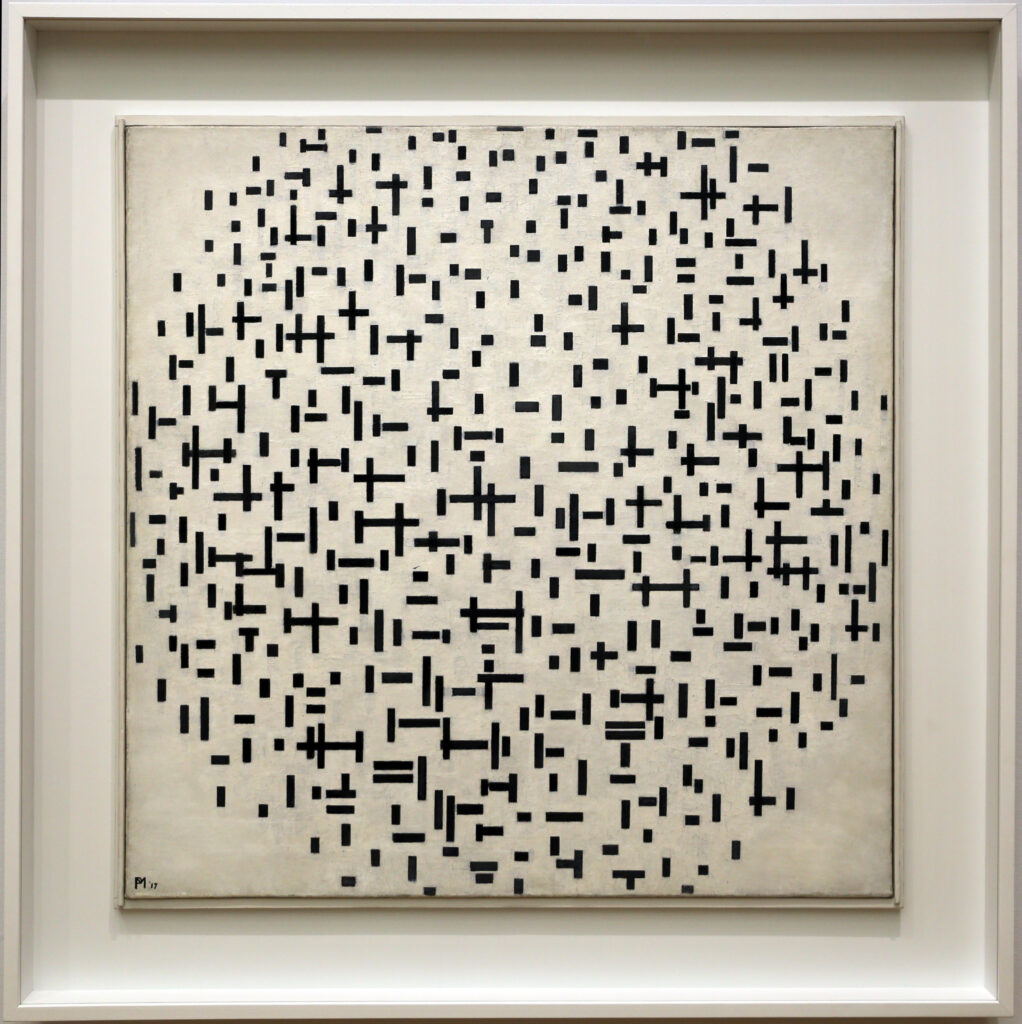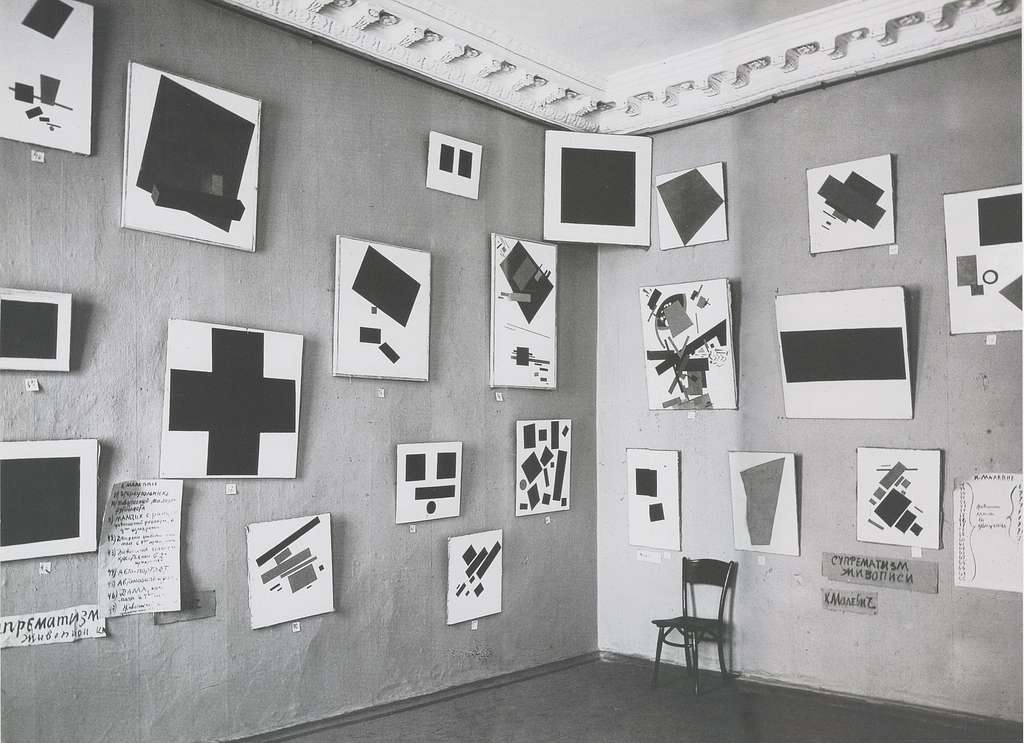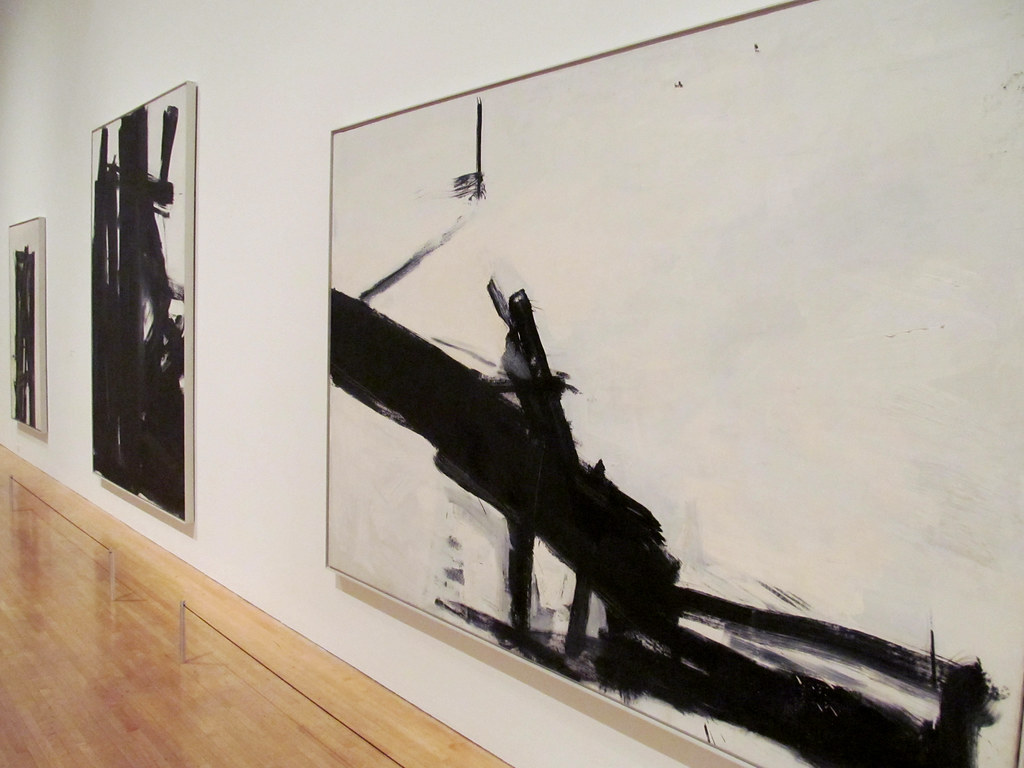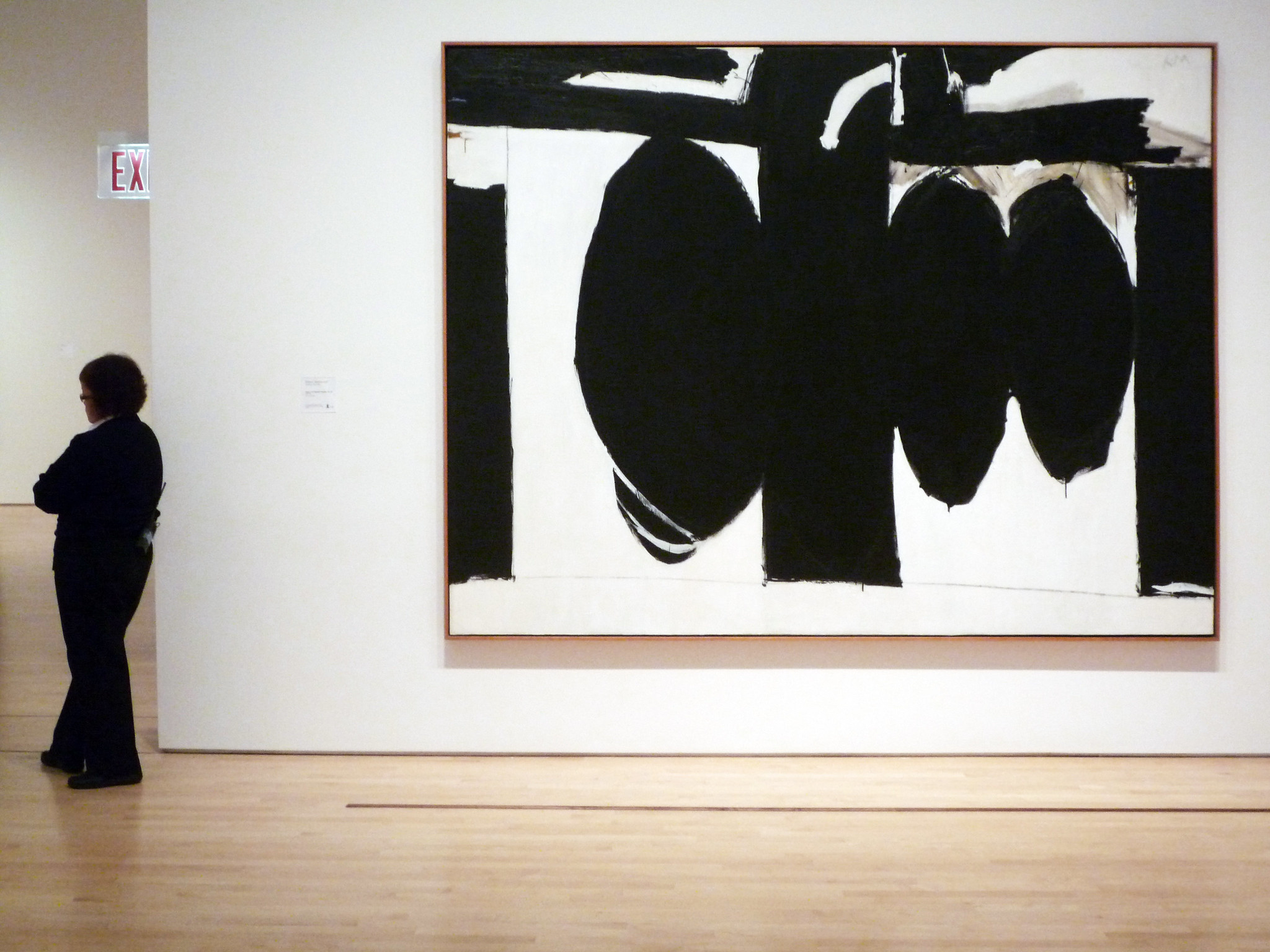Are you looking to buy black and white abstract art for your home or business?
We’ll tell you all about the history of this type of abstract art, the meaning behind it, and how to choose the right paintings that will fit in with your decor.
The origins of black paint
In order to make a black and white painting today, most artists would start with a white canvas and use black paint to create marks and shapes.
But did you know that artists were using black paint as early as 17,000 years ago! They began using charcoal, then carbonized bones, and later by grinding manganese oxide. What’s crazy is that we still use those methods and materials to make black paint today!
The roots of black and white abstract art


The very first black and white abstract art paintings were said to have been produced in 1915 by Kazimir Malevich (1879-1935). He created a work entitled “Black Square” that was an important piece in the Suprematism art movement. Suprematism was focused on limited color and pure geometric forms.
Piet Mondrian (1872-1944), a leading figure in the De Stijl art movement, was producing black and white compositions from 1919 to 1921, using straight black lines on white backgrounds.
Franz Kline, the master of black and white abstract expressionism

Franz Kline (1910-1962) began painting large scale black and white abstract paintings in 1950. He was part of the Abstract Expressionist movement of art.
He had already been experimenting with small black and white sketches for some time. On his friend Willem de Kooning’s suggestion, Kline would project his drawings onto large canvases in his studio to reproduce the black and white compositions.
Motherwell and “Elegy to the Spanish Republic”

Meaning and symbolism in black and white abstract art
Interplay of opposites
Franz Kline believed that white paint was just as important as black paint. He wanted to create a dynamic interplay where both of the colors held equal significance. Critics have noted that his work transcends simple dichotomies, presenting black and white as interdependent forces that shape the viewer’s perception.
Balance, harmony, and order
Piet Mondrian’s compositions often featured a balance between black lines and white spaces, symbolizing harmony and order.
The infinite void
Kazimir Malevich’s iconic work, Black Square, represents a radical departure from representational art, using black to signify the void and the infinite possibilities of the abstract.
Grief and hope
Robert Motherwell utilized black and white to delve into themes of existence and the human condition. His Elegies to the Spanish Republic series employs black to evoke a sense of mourning and tragedy, while white spaces offer contrast and a sense of hope or resilience. Motherwell’s use of these colors reflects a deep engagement with the emotional and philosophical aspects of human experience.
Why do abstract artists choose to work with black and white?
Focus on essentials
By removing color, artists force themselves—and viewers—to pay attention to the core elements of art: line, shape, texture, and composition.
Clearer messages
Without color, the meaning or emotion can come across more directly, without distractions.
Dramatic effect
Black and white create powerful visual contrasts, making artwork striking and bold. This high contrast can easily grab attention and evoke strong feelings.
Symbolism
Black and white often symbolize opposites—life and death, good and evil, joy and sorrow. Artists can explore deep themes by playing with these contrasts.
Limitation leads to creativity
Limiting their palette challenges artists to be more creative with fewer tools. They must rely more heavily on composition and form rather than color to make an impact.
Mastering technique
Working without color requires skill in shading, line quality, and balance. It tests the artist’s ability to communicate effectively with minimal elements.
Universal appeal
Black and white often feel timeless and classic. They don’t date easily, making the art feel relevant across different periods.
Focus on the viewer
It encourages viewers to engage more deeply with the piece, adding their own interpretations or feelings without the influence of color.
Raw emotion
Without color, artists can often express more raw, intense, and pure emotions. The absence of color can sometimes create a more somber or contemplative mood.
Black and white abstract art paintings & your decor
Versatility to pair with most color schemes
Black and white abstract art is incredibly versatile in interior design because of its timelessness and ability to match any decor style. Whether in modern, minimalist spaces or traditional, classic homes, these artworks effortlessly enhance a room’s aesthetic without clashing. Their neutral palette means they pair seamlessly with any color scheme, making them adaptable even as decor trends evolve or personal tastes change.
Focal points, space, and drama
Additionally, black and white abstracts create powerful focal points, adding visual interest and depth to interiors. A single striking piece can instantly transform a room, balancing minimalist spaces or grounding eclectic designs. They also play with light and space effectively—white-dominated pieces brighten and enlarge smaller rooms, while bold contrasts add depth and drama.
Conversation starters that fit in with most other art
These artworks bring sophistication and emotional depth, making them excellent conversation starters. Their symbolic appeal and simplicity often invite reflection, enhancing living rooms, bedrooms, offices, and even kitchens. Easy to mix with other art or use as standalone pieces, black and white abstracts offer endless decorating possibilities, always elevating the overall atmosphere of any space.
